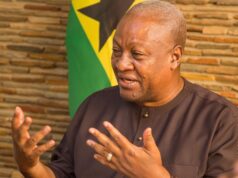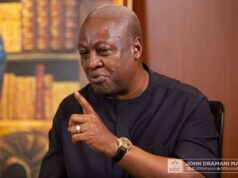The Minority in Parliament has accused the Minister of Finance, Mr Seth Terkper, of misrepresenting the facts on the country’s debt-to-gross domestic product (GDP) ratio when he presented the 2016 supplementary budget statement to the House last Monday.
Speaking at a press conference in Accra yesterday in reaction to the government’s request for the House to approve GH¢1,888,203,387 as supplementary estimates for the 2016 financial year, the Minority Spokesperson on Finance, Dr Anthony Akoto Osei, said the country’s debt-to-GDP ratio was at 71.1 per cent “and not the phony 63 per cent reported by the minister for May 2016, for which he used the December GDP data”.
Debt-to-GDP ratio is a measure that divides the total public debt of a country by its total GDP or total output.
Debt-to-GDP ratios
Dr Akoto Osei, who is a ranking member of the Finance Committee of Parliament, said the calculation of the debt-to-GDP ratio used by the Minister of Finance was incorrect.
He said as of the end of December 2015, the country’s total debt was GH¢100 billion, while the actual GDP at the end of December 2015 was GH¢140 billion.
That, he said, gave a debt-to-GDP ratio of 72 per cent.
The Minority Spokesperson said in January 2016, Ghana’s debt increased from GH¢100 billion to GH¢102 billion, indicating that the government projected that by December 2016 the GDP would amount to GH¢167 billion.
“In calculating the debt-to-GDP ratio for January 2016, instead of using the projected GDP for January 2016, the government used the projected GDP for December 2016.
“When you do this, the debt-to-GDP ratio declines dramatically from 72 per cent in December 2015 to 60 per cent one month later, even though the debt has increased,” he said.
Similarly, he said the government had taken the total debt stock in May 2016 and divided it by the projected GDP for December 2016 to arrive at a debt-to-GDP ratio of 63 per cent.
Poor economic performance
Dr Akoto Osei said Ghana’s GDP grew from 4.2 per cent in 2001 to 8.4 per cent in 2008 under the New Patriotic Party (NPP) government, adding that the growth occurred without revenue from crude oil exports and in periods when the world was experiencing the worst economic crisis in decades.
However, he said under the National Democratic Congress (NDC) government, the GDP growth rate reduced to four per cent in 2009, increased to eight per cent in 2010, plummeted to 4.1 per cent in 2014 and reduced further to 3.9 per cent in 2015.
“In the eight years of the NDC government, the size of the economy has increased from $28.5 billion in 2008 to a projected $39.4 billion in 2016 (with oil),” he said.
Power situation
Dr Akoto Osei said after the President’s declaration that the load-shedding exercise, otherwise called dumsor, had been fixed, the situation had become worse and “there is no end in sight”.
That, he said, was in spite of the imposition of high cost emergency plants and the alleged corruptible procurement of the Ameri and Karpower plants.
“Akosombo has constantly been over-drafted, thermal plants are frequently breaking down and all our plants operate below capacity,” he said.
The Minority Spokesperson said the debt of the Volta River Authority ((VRA) stood at $1.53 billion as of March 2016.
He said the debts, which excluded current interest, roll-over fees and other charges, were expected to hit $2 billion by the end of this year, more than the entire assets of the VRA.
By: Graphic Online


























